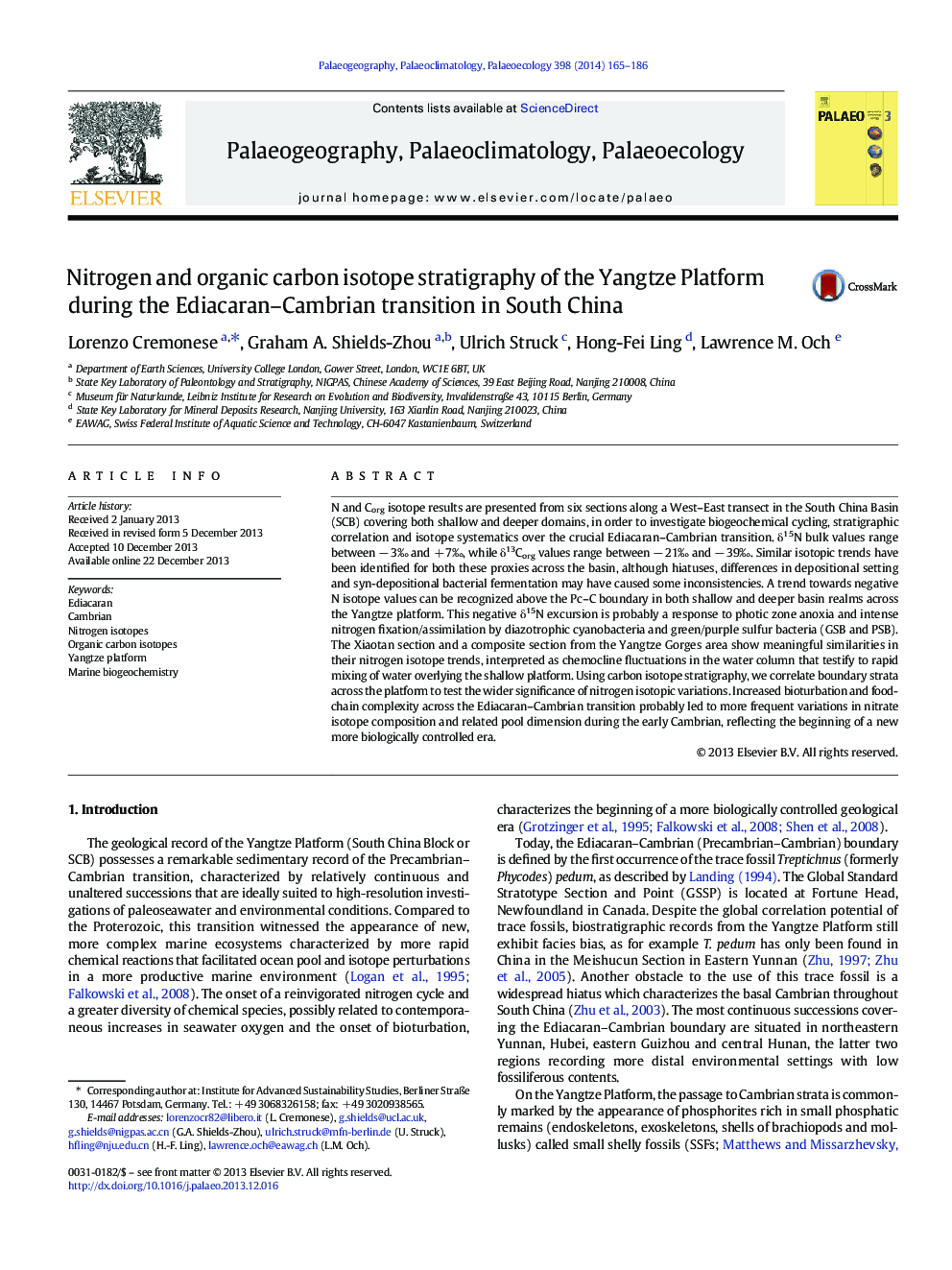| Article ID | Journal | Published Year | Pages | File Type |
|---|---|---|---|---|
| 4466376 | Palaeogeography, Palaeoclimatology, Palaeoecology | 2014 | 22 Pages |
•N and Corg data indicate an articulated and periodically complete nitrogen cycle.•Nitrogen isotopes are potent tools to monitor the oxidative seawater conditions.•We are able to build a paleoseawater circulation system across the Pc-C boundary.•Episodically occurrence of green/purple sulfur bacteria has been envisaged.•Nitrogen isotopes preserved in rock sediments retained their original values.
N and Corg isotope results are presented from six sections along a West–East transect in the South China Basin (SCB) covering both shallow and deeper domains, in order to investigate biogeochemical cycling, stratigraphic correlation and isotope systematics over the crucial Ediacaran–Cambrian transition. δ15N bulk values range between − 3‰ and + 7‰, while δ13Corg values range between − 21‰ and − 39‰. Similar isotopic trends have been identified for both these proxies across the basin, although hiatuses, differences in depositional setting and syn-depositional bacterial fermentation may have caused some inconsistencies. A trend towards negative N isotope values can be recognized above the Pc–C boundary in both shallow and deeper basin realms across the Yangtze platform. This negative δ15N excursion is probably a response to photic zone anoxia and intense nitrogen fixation/assimilation by diazotrophic cyanobacteria and green/purple sulfur bacteria (GSB and PSB). The Xiaotan section and a composite section from the Yangtze Gorges area show meaningful similarities in their nitrogen isotope trends, interpreted as chemocline fluctuations in the water column that testify to rapid mixing of water overlying the shallow platform. Using carbon isotope stratigraphy, we correlate boundary strata across the platform to test the wider significance of nitrogen isotopic variations. Increased bioturbation and food-chain complexity across the Ediacaran–Cambrian transition probably led to more frequent variations in nitrate isotope composition and related pool dimension during the early Cambrian, reflecting the beginning of a new more biologically controlled era.
